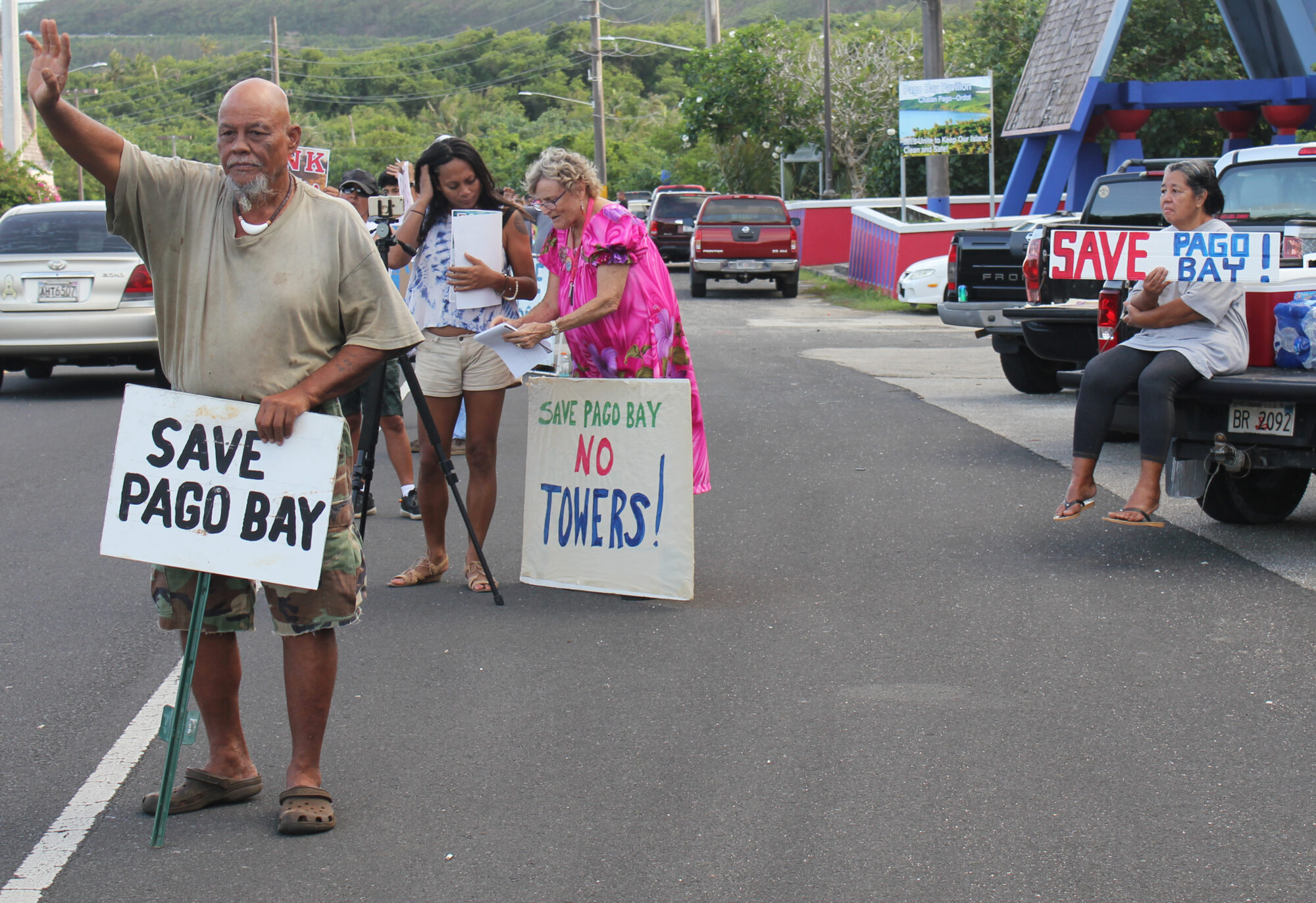FCB Planners announced the development of a condominium project near Pago Bay. The project would consist of two structures – a 12 story tower and an 11 story tower, which would include a pool and other amenities.
While the developers claim that the project would provide the island with more jobs and benefit the surrounding area’s infrastructure, residents have voiced strong opposition against it.
On Feb. 23, members and supporters of Save Southern Guam Inc. waved at passing motorists during an awareness event by the Pago Bay Bridge.
Save Southern Guam Inc. is a local grassroots movement whose mission is to preserve the coasts and shorelines of southern Guam. It was established in 2015 when its founder, Lasia Casil, heard that they were going to develop the project.
“I just thought that the developers never reached out to the community,” Casil said. “This is is gonna affect our utilities, our traffic. No one asked the people what they want.”
For some residents, the bay has been an integral part of their identity and lifestyle. Amy Castro, a member of the movement, attended the event with her family. Castro comes from a family of fishermen who have fished at the bay for five generations.
“My children enjoy fishing,” she said. “What we’re trying to do [here] is perpetuate the culture. Fishing grounds [here] are rare, because many of the fishing spots have been designated as marine preserves. Pago Bay is one of our spots and we do not want to see how the towers would affect us.”
The future of development
“It’s [going] to be a great big eyesore,” said Linda Tatreau, George Washington High School’s Marine Mania advisor. “Pago Bay is the gateway to the South and [these] high-rise towers are going to be the gateway for uncontrolled development in the South.”
According to Tatreau, a large part of the problem is with government entities not being more particular about development projects.
“We just don’t believe that issuing anyone who wants a variance is a responsible way to go,” she said.
From an environmental standpoint, the project raises some concerns. According to Else Demeulenaere, the associate director of UOG’s Center for Island Sustainability (CIS), the development’s effects on the wetlands would be of primary concern.
The most important functions of a wetland are minimizing flooding and preventing erosion while providing a habitat for native fauna and flora.
Other areas of concern include stormwater runoff, domestic wastewater, water pollution from pesticide use, and human impact.
Low Impact Development (LID) techniques would reduce the impact of stormwater runoff. In order to maintain good water quality for the wetland and ocean, the development would have to assure compliance with wastewater regulations.
“The last concern is the increased human activity in the wetlands,” Demeulenaere said. “Increased use of boats, trash, and trampling can have a negative impact on the environment.”
To discuss the planning and possible impact of the project, a panel session on the topic will be held at the 8th annual Island Sustainability Conference from April 19 to 21. The conference’s theme is “Cultivating Communities for Sustainable Action” and will be a forum to discuss the project with all concerned parties.
For more information, email shelton@triton.uog.edu or elsed@triton.uog.edu.

